Download RapID™ SPOT INDOLE REAGENT
Transcript
ENGLISH MATERIALS REQUIRED BUT NOT SUPPLIED (1) Loop sterilization device, (2) Inoculating loop, swabs, collection containers, (3) Incubators, alternative environmental systems, (4) Supplemental media, (5) Quality control organisms. RapID™ SPOT INDOLE REAGENT INTENDED USE Remel RapID™ Spot Indole Reagent is recommended for use with Remel RapID™ Identification Systems. SUMMARY AND EXPLANATION In 1963, Vracko et al. evaluated the use of ρ-dimethylaminocinnamaldehyde (DMACA) to detect indole production by enteric 1 gram-negative bacilli. Further testing by Lowrance et al. demonstrated 2 DMACA to be the most sensitive reagent for rapid indole detection. PRINCIPLE Intracellular enzymes collectively called “tryptophanases” mediate the degradation of tryptophan to produce indole and other metabolic end products. Indole can be detected by addition of ρ-dimethylaminocinnamaldehyde, which combines with indole to produce a distinct blue-green color. REAGENTS (CLASSICAL FORMULA)* ρ-Dimethylaminocinnamaldehyde (CAS 6203-18-5) ............... 10.0 g Hydrochloric Acid (CAS 7647-01-0)....................................... 100.0 ml Demineralized Water (CAS 7732-18-5) ................................. 900.0 ml *Adjusted as required to meet performance standards. PRECAUTIONS WARNING! Causes eye, skin, and respiratory tract irritation. This product is for In Vitro diagnostic use and should be used by properly trained individuals. Precautions should be taken against the dangers of microbiological hazards by properly sterilizing specimens, containers and media after use. Directions should be read and followed carefully. Refer to Material Safety Data Sheet for additional information. STORAGE This product is ready for use and no further preparation is necessary. Store product in its original container at 2-8°C until used. Do not freeze or overheat. Protect from light. QUALITY CONTROL All lot numbers of RapID™ Spot Indole Reagent have been tested and found to be acceptable. Quality control organisms should be tested according to the guidelines in the RapID™ Identification System in use or according to established laboratory quality control procedures. If aberrant quality control results are noted, patient results should not be reported. BIBLIOGRAPHY 1. 2. 3. 4. Vracko, R. and J.C. Sherris. 1963. Am. J. Clin. Path. 39:429-432. Lowrance, B.L., P. Reich, and W.H. Traub. 1969. Appl. Microbiol. 17:923-924. MacFaddin, J.F. 2000. Biochemical Tests for Identification of Medical Bacteria. 3rd ed. Lippincott Williams and Wilkins, Philadelphia, PA. Murray, P.R., E.J. Baron, J.H. Jorgensen, M.L. Landry, and M.A. Pfaller. 2007. Manual of Clinical Microbiology. 9th ed. ASM Press, Washington, D.C. PACKAGING REF R8309002, RapID™ Spot Indole Reagent .............. 15 ml / Bottle Symbol Legend REF Catalog Number IVD In Vitro Diagnostic Medical Device LAB For Laboratory Use Consult Instructions for Use (IFU) Temperature Limitation (Storage Temp.) LOT Batch Code (Lot Number) Use By (Expiration Date) EC REP European Authorized Representative PRODUCT DETERIORATION This product should not be used if (1) the color has changed, (2) the expiration date has passed, or (3) there are other signs of deterioration. CAS (Chemical Abstracts Service Registry No.) SPECIMEN COLLECTION, STORAGE, AND TRANSPORT Specimens should be collected and handled following recommended 4 guidelines. IFU 8309002, Revised February 9, 2009 12076 Santa Fe Drive, Lenexa, KS 66215, USA General Information: (800) 255-6730 Technical Service: (800) 447-3641 Order Entry: (800) 447-3635 Local/International Phone: (913) 888-0939 International Fax: (913) 895-4128 Website: www.remel.com Email: [email protected] Printed in U.S.A. GERMAN PROBENENTNAHME, LAGERUNG UND TRANSPORT Die Probenentnahme und -handhabung sollte unter Berücksichtigung 4 der empfohlenen Richtlinien durchgeführt werden. RapID™ SPOT INDOLE REAGENT Verwendungszweck Remel RapID™ Spot Indol-Reagens ist zur Verwendung mit den Remel RapID™-Identifikationssystemen empfohlen. ZUSAMMENFASSENDE ERKLÄRUNG Im Jahre 1963 untersuchten Vracko et al. die Verwendung von ρ-Dimethylaminozinnamaldehyd (DMACA) zum Nachweis der 1 Indolproduktion durch gramnegative Darmbakterien. Weitere von Lowrance et al. durchgeführte Tests zeigten, dass es sich bei DMACA um das für einen schnellen Nachweis von Indol sensitivste 2 Reagenz handelt. TESTPRINZIP Intrazelluläre, unter der Bezeichnung „Tryptophanasen“ zusammengefasste Enzyme steuern den Abbau von Tryptophan zur Produktion von Indol und anderen metabolischen Endprodukten. Indol kann durch das Hinzufügen von ρ-Dimethylaminozinnamaldehyd nachgewiesen werden, dass sich mit Indol verbindet, und dabei eine klar erkennbare blaugrüne Färbung ergibt. REAGENZIEN (KLASSISCHE REZEPTUR)* ρ-Dimethylaminozinnamaldehyd (CAS-Nr. 6203-18-5) ............10,0 g Salzsäure (CAS-Nr. 7647-01-0)..............................................100,0 ml Vollentsalztes Wasser (CAS-Nr. 7732-18-5) ..........................900,0 ml BENÖTIGTE MATERIALIEN (NICHT IM LIEFERUMFANG ENTHALTEN) (1) Gerät zur Sterilisation der Inokulationsschlinge, (2) Inokulationsschlinge, Abstrichbesteck, Probenbehälter, (3) Inkubatoren, andere Klimasysteme, (4) zusätzliche Medien, (5) Qualitätskontrollorganismen. QUALITÄTSKONTROLLE Sämtliche Chargennummern des RapID™ Spot Indol-Reagens wurden getestet und für tauglich befunden. Qualitätskontrollorganismen sollten entsprechend den Richtlinien für das verwendete RapID™Identifikationssystem oder entsprechend den Anforderungen anerkannter Qualitätssicherungsverfahren für Labore getestet werden. Treten im Rahmen der Qualitätskontrolle abweichende Ergebnisse auf, dürfen die Patientenergebnisse nicht verwendet werden. LITERATURANGABEN 1. 2. 3. 4. Vracko, R. and J.C. Sherris. 1963. Am. J. Clin. Path. 39:429-432. Lowrance, B.L., P. Reich, and W.H. Traub. 1969. Appl. Microbiol. 17:923-924. MacFaddin, J.F. 2000. Biochemical Tests for Identification of Medical Bacteria. 3rd ed. Lippincott Williams and Wilkins, Philadelphia, PA. Murray P.R., E.J. Baron, J.H. Jorgensen, M.L. Landry and M.A. Pfaller. 2007. Manual of Clinical Microbiology. 9th ed. ASM Press, Washington, D.C. PACKUNGSGRÖSSE REF R8309002, RapID™ Spot Indole Reagent ...........15 ml / Flasche *An die Erfüllung der jeweiligen Leistungsstandards angepasst. Symbollegende VORSICHTSMASSNAHMEN WARNUNG! Löst Reizungen von Augen, Haut und Atemwegen aus. Dieses Produkt ist für die Verwendung in der In-vitro-Diagnostik bestimmt und sollte nur von entsprechend geschulten Personen verwendet werden. Mikrobiologischen Gefahren sollte vorgebeugt werden, indem Proben, Behälter und Transportmedien nach Gebrauch sterilisiert werden. Die Gebrauchsanweisung muss sorgfältig gelesen und genau befolgt werden. Zusätzliche Informationen siehe Sicherheitsdatenblatt. REF Katalog-Nummer IVD Medizinprodukt zur In-vitro-Diagnostik LAB Für den Laboreinsatz Gebrauchsanweisung beachten Temperaturbereich (Lagerungstemperatur) LOT LAGERUNG Dieses Produkt ist ohne weitere Vorbereitung gebrauchsfertig. Das Produkt sollte in seinem Originalbehälter im Dunkeln bei 2-8°C bis zum Gebrauch aufbewahrt werden. Nicht einfrieren oder überhitzen. Vor Lichteinstrahlung schützen. BEEINTRÄCHTIGUNG DER PRODUKTQUALITÄT Dieses Produkt sollte bei (1) einer Farbänderung, (2) beim Überschreiten des Verfallsdatums und (3) beim Auftreten anderer Anzeichen eines Qualitätsverlusts nicht verwendet werden. Chargenbezeichnung (Chargennummer) Verwendbar bis (Verfallsdatum) EC REP Autorisierte Vertretung für EU-Länder CAS (Chemical Abstracts Service-Nummer) IFU 8309002. Überarbeitete Fassung vom 2009-02-09 12076 Santa Fe Drive, Lenexa, KS 66215, USA Allgemeine Informationen: (800) 255-6730 Technischer Kundendienst: (800) 447-3641 Bestellungen: (800) 447-3635 Telefon lokal/international: +1 (913) 888-0939 Faxnummer international: (913) 895-4128 Website: www.remel.com E-Mail: [email protected] Printed in USA FRENCH RECUEIL, CONSERVATION ET TRANSPORT DES PRÉLÈVEMENTS Les prélèvements doivent être recueillis et manipulés conformément 4 aux recommandations en vigueur. RapID™ SPOT INDOLE REAGENT UTILISATION PRÉVUE Le réactif spot indole RapID™ est recommandé pour une utilisation associée aux systèmes d’identification RapID™ de Remel. RÉSUMÉ ET EXPLICATION En 1963, Vracko et al. ont évalué l’utilisation du ρ-diméthylaminocinnamaldéhyde (DMACA) pour détecter la production d’indole 1 par les bacilles entériques à gram négatif. Un test ultérieur réalisé par Lowrance et al. a démontré que la DMACA est le réactif le plus 2 sensible pour la détection rapide de l’indole. PRINCIPE Les enzymes intracellulaires collectivement appelées « tryptophanes pyrrolase » facilitent la dégradation du tryptophane afin de produire de l’indole et d’autres produits métaboliques ultimes. L’indole peut être détecté par addition de ρ-diméthylaminocinnamaldéhyde, qui s’associe à l’indole pour produire une couleur bleu-vert distinctive. RÉACTIFS (FORMULE CLASSIQUE)* ρ-Diméthylaminocinnamaldéhyde (CAS 6203-18-5) ..............10,0 g Acide chlorhydrique (CAS 7647-01-0) ..................................100,0 ml Eau déminéralisée (CAS 7732-18-5)....................................900,0 ml MATÉRIEL REQUIS, MAIS NON FOURNI (1) Dispositif de stérilisation en boucle, (2) boucle à inoculation, écouvillons, récipients de prélèvement, (3) incubateurs, systèmes environnementaux alternatifs, (4) milieux supplémentaires, (5) organismes de contrôle de qualité. CONTRÔLE DE QUALITÉ Tous les numéros de lots du réactif spot indole RapID™ ont été testés et reconnus acceptables. Les organismes de contrôle de la qualité doivent être testés conformément aux directives du système d’identification RapID™ en vigueur ou aux procédures de contrôle de la qualité établies pour le laboratoire. En cas de résultats de contrôle de qualité aberrants, ne pas rendre les résultats des patients. BIBLIOGRAPHIE 1. 2. 3. 4. Vracko, R. and J.C. Sherris. 1963. Am. J. Clin. Path. 39:429-432. Lowrance, B.L., P. Reich, and W.H. Traub. 1969. Appl. Microbiol. 17:923-924. MacFaddin, J.F. 2000. Biochemical Tests for Identification of Medical Bacteria. 3rd ed. Lippincott Williams and Wilkins, Philadelphia, PA. Murray P.R., E.J. Baron, J.H. Jorgensen, M.L. Landry and M.A. Pfaller. 2007. Manual of Clinical Microbiology. 9th ed. ASM Press, Washington, D.C. CONDITIONNEMENT REF R8309002, RapID™ Spot Indole Reagent ..............15 ml / flacon * Avec compensations éventuelles pour satisfaire les normes de performance. Légende des Symboles PRÉCAUTIONS AVERTISSEMENT ! Cause une irritation de la peau, des yeux et des voies respiratoires. Ce produit, exclusivement destiné à un usage diagnostique In Vitro, ne doit être utilisé que par des personnes dûment formées. Il faut prendre toutes les précautions contre les risques microbiologiques et il est indispensable de bien stériliser les prélèvements, les récipients et les milieux après usage. Il faut lire attentivement les instructions et les respecter scrupuleusement. Pour de plus amples renseignements, consulter la fiche de données de sécurité. STOCKAGE Ce produit est prêt à l’emploi ; aucune préparation supplémentaire n’est nécessaire. Stocker le produit dans son flacon d’origine à une température comprise entre 2 et 8°C jusqu’à son utilisation. Ne pas congeler ni surchauffer. Tenir à l’abri de la lumière. DÉTÉRIORATION DU PRODUIT Ce produit ne doit pas être utilisé si (1) la couleur a changé, (2) la date de péremption est dépassée ou (3) d’autres signes de détérioration sont présents. REF Numéro de référence catalogue IVD Dispositif médical de diagnostic in vitro LAB Pour utilisation en laboratoire Consulter le mode d'emploi (IFU) Limites de température (stockage) LOT Code du lot (numéro de lot) À utiliser avant le (date de péremption) EC REP Représentant autorisé pour l'UE CAS (numéro de registre CAS) IFU 8309002, révisée le 2009-02-09 12076 Santa Fe Drive, Lenexa, KS 66215, États-Unis Renseignements: (800) 255-6730 Service technique: (800) 447-3641 Commandes: (800) 447-3635 Téléphone (local/international): +1 (913) 888-0939 Télécopie (international): +1 (913) 895-4128 Site Web : www.remel.com Adresse électronique : [email protected] Imprimée aux États-Unis ITALIAN RapID™ SPOT INDOLE REAGENT USO PREVISTO Si raccomanda di utilizzare Remel RapID™ Spot Indole Reagent unitamente a Remel RapID™ Identification Systems. SOMMARIO E SPIEGAZIONE Nel 1963, Vracko et al. hanno verificato l'uso del ρ-dimetilamminocinnamaldeide (DMACA) per rilevare la produzione di indolo da parte 1 di bacilli gram-negativi enterici. Ulteriori test effettuati da Lowrance et al. hanno dimostrato come il DMACA sia il reagente più sensibile per 2 una rapida rilevazione di indolo. PRINCIPIO Gli enzimi intracellulari collettivamente chiamati "triptofanasi" mediano il processo di degradazione del triptofano producendo indolo e altri prodotti finali metabolici. È possibile rilevare l'indolo aggiungendo la p-dimetilamminocinnamaldeide, la quale reagisce con l'indolo sviluppando un distinto colore blu-verde. REAGENTI (FORMULA CLASSICA)* ρ-dimetilamminocinnamaldeide (N. CAS 6203-18-5) .............. 10,0 g Acido idroclorico (N. CAS 7647-01-0).................................... 100,0 ml Acqua demineralizzata (N. CAS 7732-18-5).......................... 900,0 ml MATERIALE NECESSARIO MA NON FORNITO (1) Dispositivo di sterilizzazione per anse, (2) ansa per inoculo, tamponi, contenitori di raccolta, (3) termostato o sistemi per la formazione di atmosfere modificate, (4) terreni di coltura supplementari, (5) microrganismi per il controllo qualità. CONTROLLO QUALITÀ Numerosi RapID™ Spot Indole Reagent sono stati testati ottenendo risultati ritenuti soddisfacenti. Il controllo qualità con microrganismi deve essere effettuato in conformità con le linee guida del RapID™ Identification System utilizzato o secondo le procedure di laboratorio del controllo qualità stabilite. Se i test di controllo qualità forniscono risultati aberranti, i risultati ottenuti con i campioni in esame non devono essere refertati. BIBLIOGRAFIA 1. 2. 3. 4. Vracko, R. and J.C. Sherris. 1963. Am. J. Clin. Path. 39:429-432. Lowrance, B.L., P. Reich, and W.H. Traub. 1969. Appl. Microbiol. 17:923-924. MacFaddin, J.F. 2000. Biochemical Tests for Identification of Medical Bacteria. 3rd ed. Lippincott Williams and Wilkins, Philadelphia, PA. Murray, P.R., E.J. Baron, J.H. Jorgensen, M.L. Landry, and M.A. Pfaller. 2007. Manual of Clinical Microbiology. 9th ed. ASM Press, Washington, D.C. CONFEZIONE REF R8309002, RapID™ Spot Indole Reagent ............15 ml / flacone Legenda dei Simboli * La formulazione è regolata in base ai criteri di performance richiesti. REF Numero catalogo PRECAUZIONI AVVERTENZA! Può causare irritazione a occhi, cute e vie respiratorie. IVD Dispositivo per uso diagnostico in vitro LAB Per uso in laboratorio Il prodotto è indicato esclusivamente per uso diagnostico in vitro e deve essere utilizzato solo da personale competente ed esperto. Si raccomanda di adottare le dovute precauzioni contro eventuali rischi microbiologici, sterilizzando opportunamente dopo l'uso campioni, contenitori e terreni di coltura. Leggere con attenzione le istruzioni contenute in questo documento e attenervisi scrupolosamente. Per ulteriori informazioni consultare la Scheda di Sicurezza del prodotto. CONDIZIONI DI CONSERVAZIONE Questo prodotto è pronto per l'uso e non occorre ulteriore preparazione. Il prodotto deve essere conservato nel suo contenitore originale a una temperatura di 2-8°C fino al momento dell’utilizzo. Non congelare né surriscaldare. Proteggere il prodotto dalla luce. Consultare le istruzioni per l'uso (Istruzioni per l'uso) Limitazioni per temperatura (Temperatura di conservazione.) LOT Codice lotto (Numero lotto) Da utilizzare entro (data di scadenza) EC REP Rappresentante autorizzato per l'Europa N. CAS (Numero del registro del Chemical Abstract Service) DETERIORAMENTO DEL PRODOTTO Questo prodotto non deve essere usato se: (1) ha cambiato colore, (2) ha superato la data di scadenza oppure (3) presenta segni di deterioramento. PRELIEVO, CONSERVAZIONE E TRASPORTO DEI CAMPIONI 4 Prelevare e trattare i campioni seguendo le linee guida raccomandate. IFU 8309002, Data ultima revisione: 2009-02-09 12076 Santa Fe Drive, Lenexa, KS 66215, USA Informazioni generali: (800) 255-6730 Assistenza tecnica: (800) 447-3641 Ufficio vendite: (800) 447-3635 Tel. locale/internazionale (913) 888-0939 Fax dall'estero: (913) 895-4128 Sito Web: www.remel.com Indirizzo posta elettronica: [email protected] Stampato negli U.S.A. SPANISH RapID™ SPOT INDOLE REAGENT USO PREVISTO Se recomienda el reactivo RapID™ Spot Indole de Remel para su uso con los sistemas de identificación RapID™ de Remel. RESUMEN Y EXPLICACIÓN En el año 1963, Vracko y cols. evaluaron el uso de ρ-dimetilaminocinamaldehído (DMACA) para detectar la producción de indol por 1 medio de bacilos gramnegativos entéricos. Pruebas posteriores por parte de Lowrance y cols. demostraron que el DMACA era el reactivo 2 más sensible para la rápida detección de indol. PRINCIPIO DE LA PRUEBA Las enzimas intracelulares llamadas colectivamente “triptofanasas” median en la degradación de triptófano para producir indol y otros productos metabólicos. El indol puede detectarse añadiendo ρdimetilaminocinamaldehído, que se combina con el indol para producir un color azul verdoso bien definido. REACTIVOS (FÓRMULA CLÁSICA)* ρ-Dimetilaminocinamaldehído (CAS 6203-18-5) ......................10,0 g Ácido clorhídrico (CAS 7647-01-0) .........................................100,0 ml Agua desmineralizada (CAS 7732-18-5) ................................900,0 ml *Ajustado según necesidades para cumplir los estándares de rendimiento. MATERIALES NECESARIOS PERO NO SUMINISTRADOS (1) Asa de esterilización, (2) asa de inoculación, torundas y envases para recogidas, (3) incubadoras, sistemas ambientales alternativos, (4) medios complementarios, (5) microorganismos para el control de calidad. CONTROL DE CALIDAD Se han probado todos los lotes del reactivo RapID™ Spot Indole y sus resultados han sido aceptables. Los organismos de control de calidad deben analizarse según las recomendaciones del sistema de identificación RapID™ en uso o según los procedimientos de control de calidad establecidos en el laboratorio. Si se observan resultados anómalos en el control de calidad, no deben comunicarse los resultados de los pacientes. BIBLIOGRAFÍA 1. 2. 3. 4. Vracko, R. and J.C. Sherris. 1963. Am. J. Clin. Path. 39:429-432. Lowrance, B.L., P. Reich, and W.H. Traub. 1969. Appl. Microbiol. 17:923-924. MacFaddin, J.F. 2000. Biochemical Tests for Identification of Medical Bacteria. 3rd ed. Lippincott Williams and Wilkins, Philadelphia, PA. Murray P.R., E.J. Baron, J.H. Jorgensen, M.L. Landry and M.A. Pfaller. 2007. Manual of Clinical Microbiology. 9th ed. ASM Press, Washington, D.C. PRESENTACIÓN REF R8309002, RapID™ Spot Indole Reagent ......... Frasco de 15 ml Símbolos REF Número de catálogo PRECAUCIONES ¡ATENCIÓN! Provoca irritación en los ojos, la piel y las vías respiratorias. IVD Producto sanitario para diagnóstico in vitro Este producto es para uso diagnóstico in vitro y debe ser utilizado por personal con la formación adecuada. Deben tomarse precauciones frente a los riesgos microbiológicos, esterilizando correctamente muestras, envases y medios después de su uso. Se deben leer y seguir atentamente las instrucciones. Consultar más información en la Hoja de datos de seguridad de los materiales. LAB Para uso en laboratorio ALMACENAMIENTO Este producto se presenta listo para su uso y no requiere más preparación. Guarde este producto en su envase original, a una temperatura de 2-8°C hasta el momento de su uso. No lo congele ni lo sobrecaliente. Protéjalo de la luz. Consultar las instrucciones de uso (IFU) Límite de temperatura (de almacenamiento) LOT Código de lote (número de lote) Fecha de caducidad EC REP Representante autorizado en Europa DETERIORO DEL PRODUCTO Este producto no se debe usar si 1) el color ha cambiado; 2) se ha sobrepasado la fecha de caducidad, o 3) hay otros signos de deterioro. CAS (Nº del Chemical Abstracts Service Registry) RECOGIDA, ALMACENAMIENTO Y TRANSPORTE DE MUESTRAS Las muestras se deben recoger y manipular de acuerdo con las 4 siguientes recomendaciones. IFU 8309002, revisado el 2009-02-09 12076 Santa Fe Drive, Lenexa, KS 66215, EE.UU. Información general: (800) 255-6730 Servicio técnico: (800) 447-3641 Pedidos: (800) 447-3635 Teléfono local/internacional: (913) 888-0939 Fax internacional: (913) 895-4128 Dirección en Internet: www.remel.com Correo electrónico: [email protected] Impreso en los EE.UU.





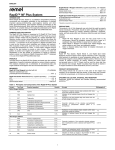
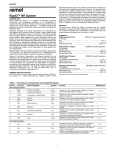
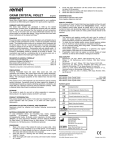
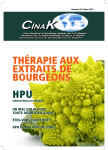
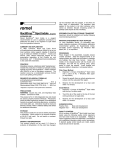

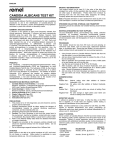
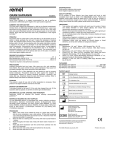
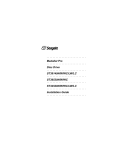


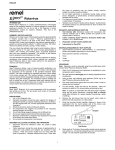
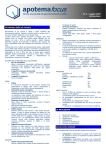

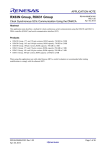
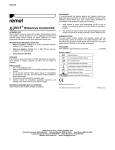
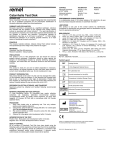

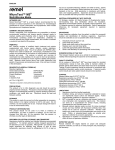
![PathoDx Strep D Grouping and Control Latexes [FR]](http://vs1.manualzilla.com/store/data/006427765_1-0055511004fa7899d2e5aa062345d9c9-150x150.png)